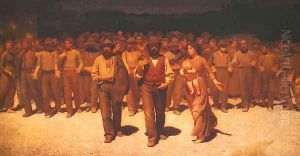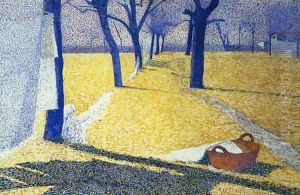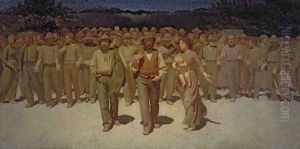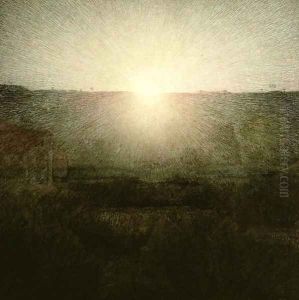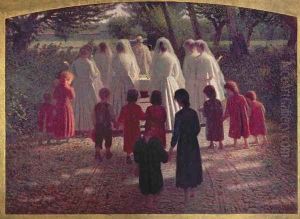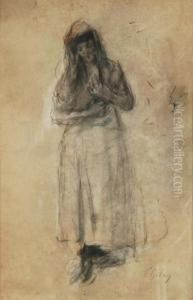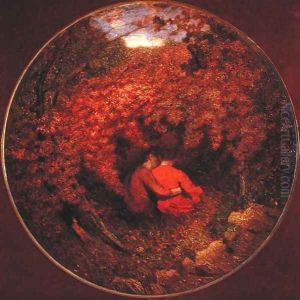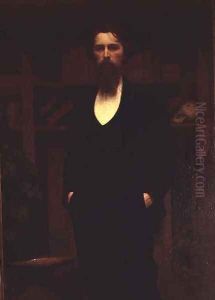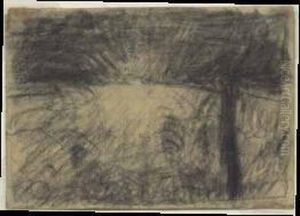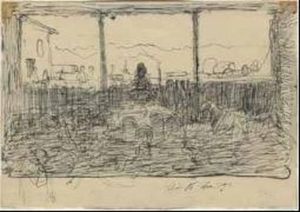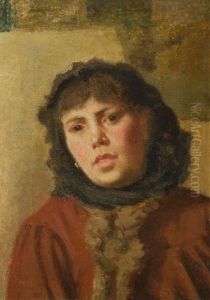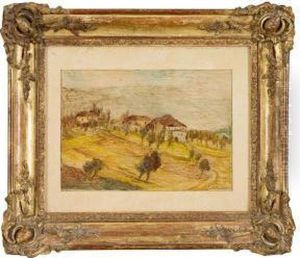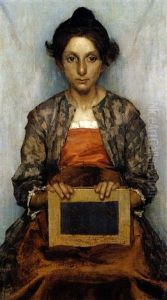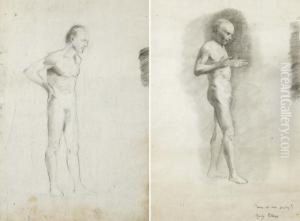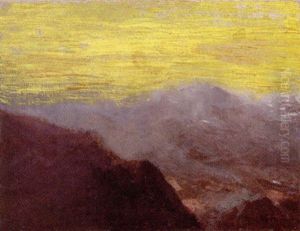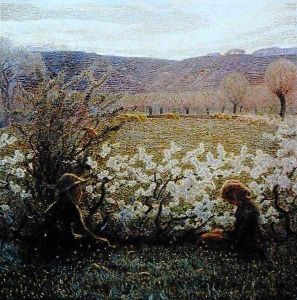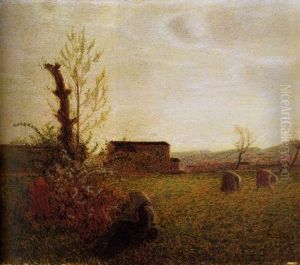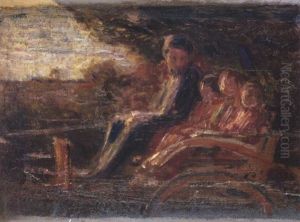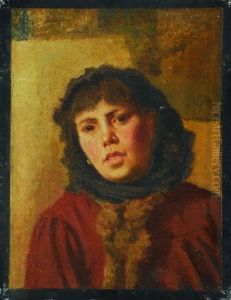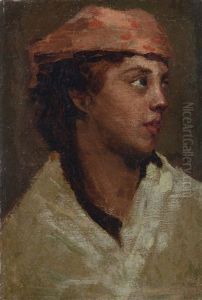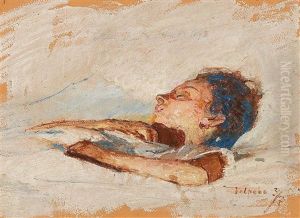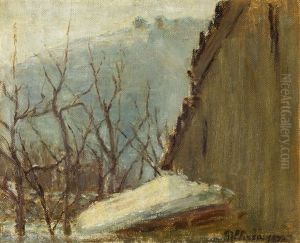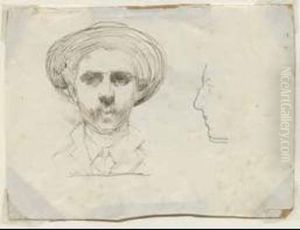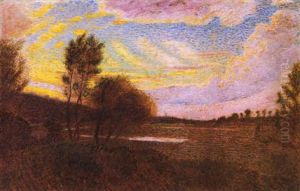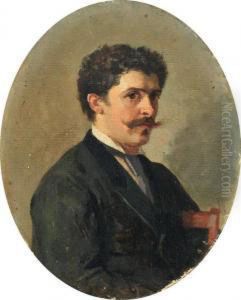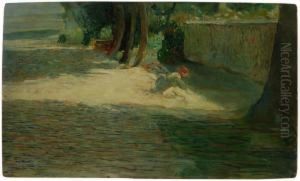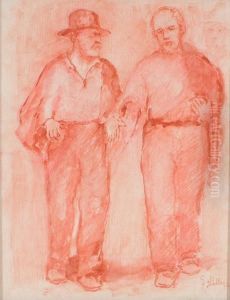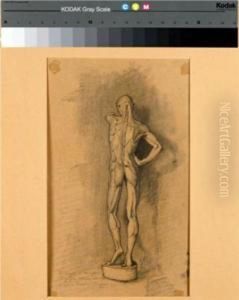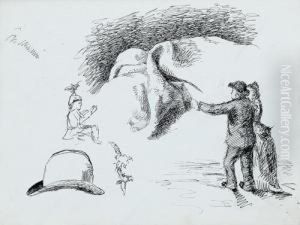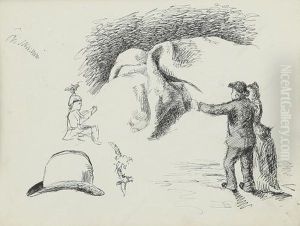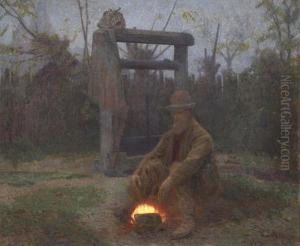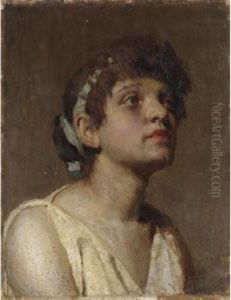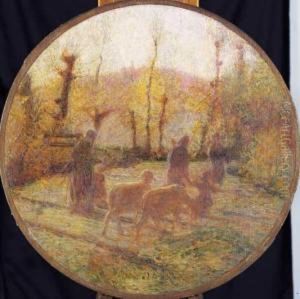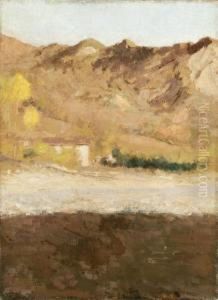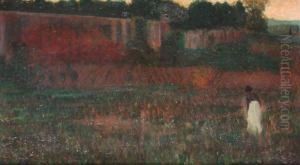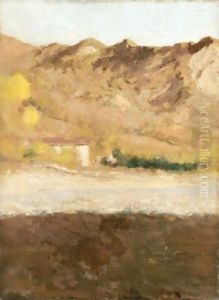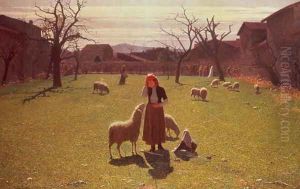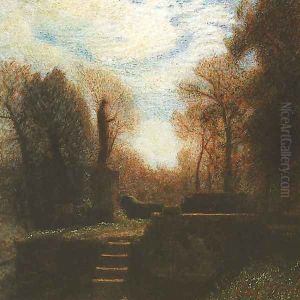Giuseppe Pellizza da Volpedo Paintings
Giuseppe Pellizza da Volpedo was an Italian painter known for his involvement in the Divisionist movement, which was the Italian variant of Pointillism. Born on July 28, 1868, in Volpedo, Italy, Pellizza initially studied at the Academy of Fine Arts in Brera, and later at the Academy of Fine Arts in Florence. He was deeply influenced by the social issues of his time and was committed to representing the struggles of the working class in his art.
Pellizza's technique involved the use of tiny dots or strokes of pure color, which would blend in the viewer's eye to create luminous and dynamic images. This technique was part of the Divisionist method, which aimed to intensify the color and vibrancy of paintings. His most celebrated work is 'Il Quarto Stato' (The Fourth Estate), completed in 1901, which depicts a group of striking workers. The painting has become an iconic representation of the labor movement and is a key example of social realism in art.
Despite his artistic achievements, Pellizza da Volpedo faced personal tragedy and struggled with financial difficulties throughout his life. His commitment to depicting the lives of the common people did not translate into commercial success during his lifetime. Tragically, Pellizza took his own life on June 14, 1907, in Volpedo, at the age of 38. Today, however, his work is celebrated for its technical innovation and its empathetic portrayal of the human condition. Pellizza's legacy lives on as an important figure in the history of Italian art, and his masterwork, 'Il Quarto Stato', continues to inspire audiences with its powerful message of unity and social justice.
